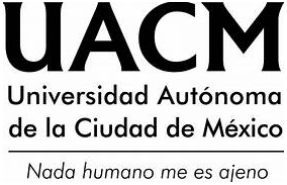BUENOS AIRES AND MONTEVIDEO: PARALLELISM AND DISPLACEMENT IN HISTORIC CENTERS
DOI:
https://doi.org/10.29092/uacm.v6i12.137Keywords:
Historic center, urban history, patrimony, intervention, housingAbstract
The two capitals have a historical interaction that joins processes, destinies and societies, which is manifested in the physical, social and architectonic configuration of both cities. However, the ways in which these processes are dealt with and developed regarding built patrimony and its protection, intervention in the historic centers or the outline of public policies to foster their recovery do not show parallelisms, but rather marked displacements. This paper aims to expose them, focusing on aspects related to urban history and intervention, patrimony, and housing in the historic centers of Buenos Aires and Montevideo.
Downloads
References
ALTEZOR, C., BARRACCHINI, H. (1971), Historia urbanística y edilicia de la ciudad de Montevideo. Montevideo: Junta Departamental de Montevideo.
ARANA, M. Y MAZZINI, A. (1990), “Montevideo”, en, AAVV, Centros históricos América Latina. Bogotá: Escala Colombia.
CHOAY, F. (2007), Alegoría del patrimonio. Barcelona: Gustavo Gili.
DELGADO, M. (2005), “Las áreas centrales de Montevideo”, en, Rosendo Mesías, Los centros vivos. La Habana: Programa Iberoamericano de Ciencia y Tecnología para el Desarrollo (CYTED). FALTA Y RESTO (2008), Amor Rioplatense. Montevideo: Murga Falta y Resto.
GONZÁLEZ TAMARIT, L. (2003), “Algunas reflexiones sobre la ciudad histórica y sobre los modos de intervenir en su recuperación”, en, Seminario iberoamericano de políticas de vivienda. Tucumán: s/e. GRUPO DE ESTUDIOS URBANOS (GEU) (1983), Una ciudad sin memoria. Montevideo. Montevideo: Ediciones de la Banda Oriental.
GUTIÉRREZ, R. (1992), Buenos Aires, evolución histórica. Bogotá: Escala.
El municipio porteño lejos de incrementar su patrimonio estatal de inmuebles para efectos de su uso para vivienda social —como lo plantea su par uruguayo— endurece su postura en relación con los inmuebles de su propiedad ocupados e incrementa los desalojos.
INTERNATIONAL COUNCIL ON MONUMENTS AND SITES (ICOMOS) (1964), Carta internacional sobre la conservación y la restauración de monu- mentos y de conjuntos histórico artísticos, II. Venecia: Congreso Internacional de Arquitectos y Técnicos de Monumentos Históricos.
____________ (1967), Informe final de la reunión sobre conservación y utilización de monumentos y lugares de interés histórico y artístico. Quito: s/e.
JEIFETZ, N., RODRÍGUEZ, C. (1999), “Cooperativa Perú: de la toma de un inmueble de propiedad municipal al impulso de un proyecto de desarrollo local”, en, AAVV, Vivir en los centros históricos, experiencias y luchas de los habitantes para permanecer en los centros históricos. México: Habitat Interational Coalition (HIC).
PONTE, C., CESIO, L., GATTI, P. MAZZINI, A. (2007), Arquitectura y pa- trimonio en Uruguay. Proceso de inserción de la arquitectura como disciplina en el patrimonio. Montevideo: Universidad de la República.
ROLAND, P. (2003), “Políticas de rehabilitación urbana. La experiencia de Montevideo”, en Seminario iberoamericano de políticas de vivienda. Tucumán: s/e.
UNESCO (1972), Convención sobre el patrimonio mundial, cultural y natural. París: Conferencia General de la UNESCO.
____________ (1976), Recomendación relativa a la salvaguardia de los conjuntos históricos y su función en la vida contemporánea. Nairobi: 19 Conferencia General de la UNESCO.
____________ PROGRAMA DE LAS NACIONES UNIDAS PARA EL DESARROLLO (PNUD) (1977), Conclusiones del Coloquio sobre la preservación de los centros históricos ante el crecimiento de las ciudades contemporáneas. Quito: Proyecto Regional del Patrimonio Cultural Andino.
VALLÉS, R. (2002), “Área central y hábitat popular”, en Rosendo Mesías y Alejandro Suárez (coords.), Los centros vivos: alternativas de hábitat en los centros antiguos de América Latina. México-La Habana: CYTED.
VIÑUALES, G. (1990), “Buenos Aires”, en AAVV, Centros históricos América Latina. Bogotá: Escala.
Published
Issue
Section
License
This Journal is licensed under Creative Commons Mexico 2.5. It is allowed to reproduce and disseminate the contents of the Journal for educational or research purposes, not for profit, as long as they are not mutilated and cite the source (Andamios, Revista de Investigación Social) and the author.
The copyright of the articles published in Andamios, Revista de Investigación Social are transferred by the author(s) to Universidad Autónoma de la Ciudad de México when the originals have been accepted, so that they are published and distributed both in the printed and electronic versions of the Journal. However, as established by law, the author(s) retains their moral rights. The author(s) will receive a form of assignment of copyright that they must to sign when their original has been accepted. In the case of collective articles, the signature of one of the authors will suffice, provided that the latter has obtained the consent of the others.
Authors may use the material of their article in other works or books published by themselves, with the condition of quoting Andamios as the original source of the texts.
The articles contained in this publication are the responsibility of their authors and do not compromise the official position of Andamios, Revista de Investigación Social of the Universidad Autónoma de la Ciudad de México.


